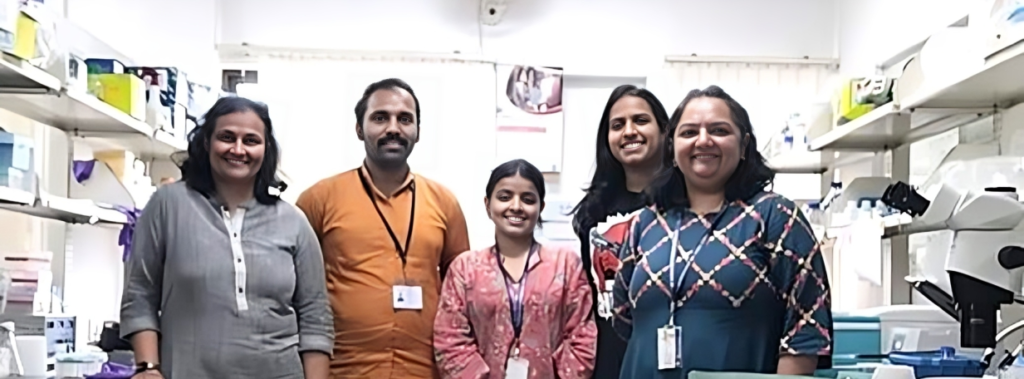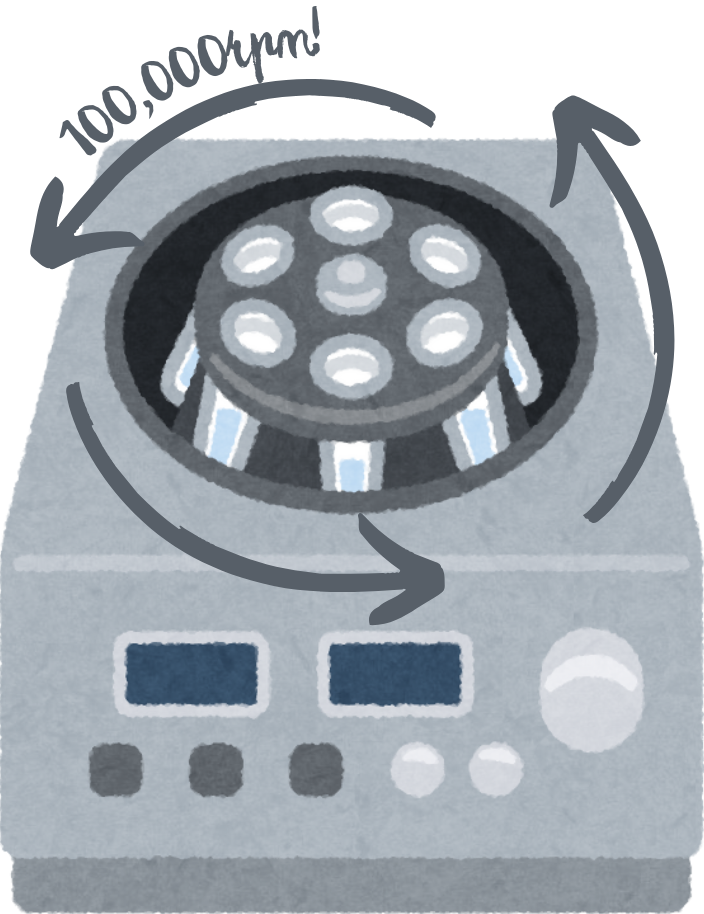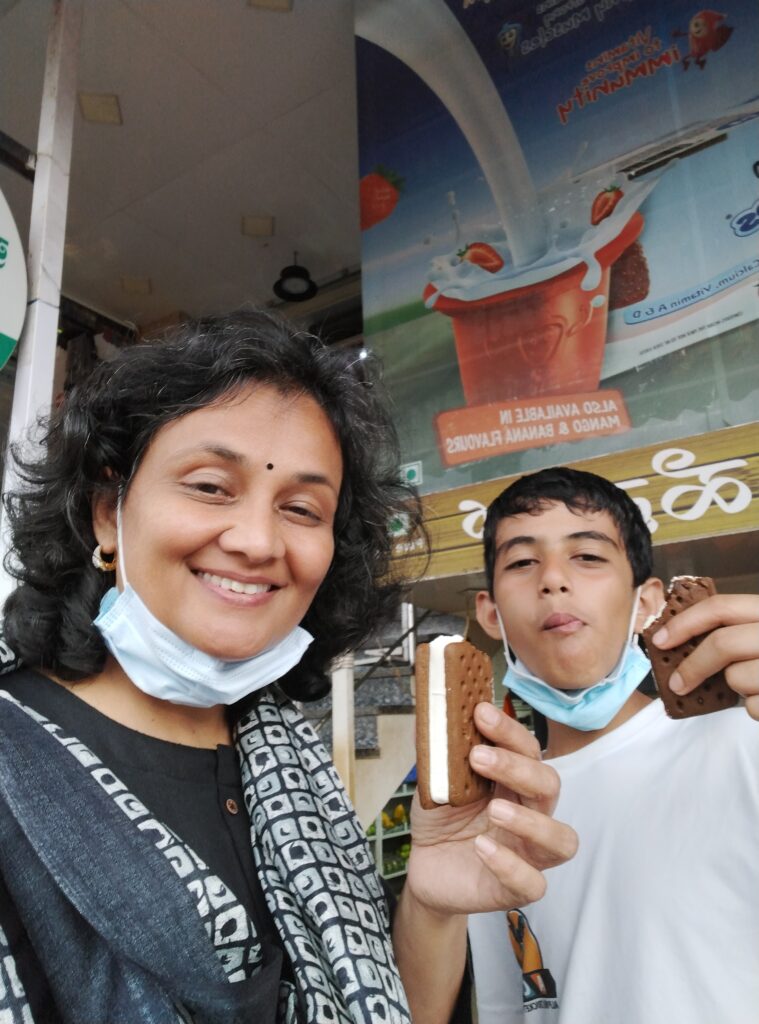Hello Neha! Tell us about yourself! What led you to take up a career in research?
Today, I am a cell biologist interested in understanding the intricacies of cellular processes in development and disease. Remarkably, the pursuit of research was not instilled in my formative years. It did not emerge as a career trajectory even after my master’s degree. However, my perspective shifted dramatically after I became a Junior Research Fellow in Prof. Satyajit (Jitu) Mayor’s lab at NCBS. My plan when I joined his lab was to learn molecular biology for a year and then join an industry.
Forget a career in academia, I had no desire or plan to do a PhD back then. However, his mentorship and the vibrant scientific environment at NCBS filled my mind with several biological questions, unlike before. He is an excellent scientist and mentor, to say the least. I was fascinated to learn how to generate mutant proteins or organisms and observe how those changes affected cellular functions. I wanted to understand more about how cells talk to each other to organize themselves in a developing embryo. It has been a chain of events since then.
Today, my lab collaborates extensively and strives to understand the molecular processes involved in the development of an organism or a diseased state.

More precisely, we look at the role of extracellular nano-vesicles (sacs that carry cargo between cells), secreted naturally by most cells (known as exovesicles or exosomes in the field), in tissue patterning or therapy resistance. I am grateful to my current campus, which allows me to work on this.
More and more research is being done to understand exosome biology and the extracellular environment. What makes these exosomes important in your research, and what is your experience working with them?
A given cell type can change its communication pattern based on its environment. The kind of nutrition it receives, the amount of stress, etc. play a role in cellular cross-talk. However, there are still many unanswered questions: which nutrients play a role, and how do they influence health, disease progression, and even the development and patterning of an embryo? The list of unknowns is too long. It’s like a catch-me-if-you-can game.
Exosomes are an effective mode of intercellular communication. Since most cells produce exosomes, they are highly heterogeneous. This heterogeneity and dynamic nature make it difficult to understand them. Imagine if exosomes were vehicles on roads; each vehicle has a definite origin, destination, and purpose. A bird’s eye view would hardly help resolve these details. To understand the role of exosomes, we will have to resolve these complexities as well. Unless we have a very well-controlled experimental approach, it is difficult to understand them.
You’ve had quite a journey from a junior research fellow to an assistant professor. What excites you the most right now?
As a postdoctoral fellow, I serendipitously fractionated a new pool of extracellular nano-vesicles. It was an oversight that generated an outcome different from the previous experiment. I am glad today that I did not ignore the observed difference. We now find that these vesicles are indeed unique in their signaling abilities. I am really excited about this work.
I’m curious to know more about how you fractionated these exosomes by chance!
During my postdoc, I had to isolate exosomes for my work. Since no one in my area was working with exosomes, I decided to follow a published protocol for isolating these exosomes, which involves centrifugation at 100,000g force.
One day, I got confused between g force and rpm and ended up over spinning the solution at 100,000 rpm! I later realized the mistake but went ahead with the analysis of the pellet (I do not like stopping experiments midway!). However, to my surprise, I got a good exosomal yield from this, and we also found other exosomal proteins in the pellet!

One day, I got confused between g force and rpm and ended up over spinning the solution at 100,000 rpm! I later realized the mistake but went ahead with the analysis of the pellet (I do not like stopping experiments midway!). However, to my surprise, I got a good exosomal yield from this, and we also found other exosomal proteins in the pellet!
Next time when I repeated the assay, I decided to go by the classical method of spinning at 100,000 g force. Again, to my surprise, the yield was very low. So, I modified the method of exosome isolation. I collected the classical exosomal pool and then centrifuged the remaining supernatant at about 100,000 rpm. We’ve been comparing the two sets of pellets since then.
It’s pretty cool how sticking with the experiment despite the mistake led to all of this!
Yes! I have been using this new exosome isolation method ever since. Each time I did this during my postdoc, I thought it would be the last time using this method. But the results always kept my curiosity alive. I am glad today that I did not stop. My mistake has allowed us to uncover interesting biology. Now, my student Ankita has meticulously addressed the distinct roles of these exosome pools. I must add here that none of this would have been possible without support from Dr. Raj Ladher from NCBS. He is instrumental in allowing my lab to keep the (re)search on and contributing in many ways. We are now eager to communicate our findings as a research paper, hopefully soon.
You also mentioned that these two different pools of exosomes have unique signaling abilities. Can you expand on this? How are they different from each other?
We find that a given signaling molecule is released from the cells onto two different kinds of exosomes. While most of the contents of these two exosome pools are the same, there are some unique proteins and RNAs that these carry. We also find that only one of these exosome pools is able to activate the genes that are important for the differentiation of stem cells into specific cells. The other pool fails to do so and rather results in the proliferation of the cells.

Then, this would mean that it’s not just the signaling molecule that determines the result. The carrier of these signaling molecules also plays a role.
Yes. Much like ourselves, the environment of the signaling molecule also plays a huge role in the outcome. This is important again in the context of disease and development.
It’s so great to hear about your journey, Neha!
You are also an enthusiastic member of the society. Has the society benefited you in some way?
InSDB is a vibrant hub of developmental biologists and provides a valuable platform that unites me with the research community. It helps me to stay informed about the ongoing work of fellow researchers from various institutes. It is a great platform for networking, exchanging ideas, facilitating meaningful interactions, and seeking advice. Engaging with peers via this platform has helped me broaden my research perspective, refine my approach, and contribute to the collective effort of knowledge generation.
Is there something you wish InSDB would initiate in the future?
Yes! You could consider opening a society journal with publication standards of reputed international journals. We can also aim to make InSDB meetings visible internationally like other international society meetings.
That would be an exciting initiative! We would definitely want InSDB meetings to get more international visibility as well.
Before we wrap up, what’s a fun fact that people probably don’t know about you?
As a child, I could not understand what “To let” meant. For a long time, I believed that somehow (maybe mischievously) such labels were missing the alphabet ‘i’ and meant “Toilet”.
—
Dr. Neha Vyas is an assistant professor at St. John’s Research Institute, SJNAHS, Bangalore, India. Connect with her on our forum.





